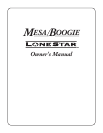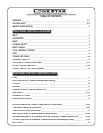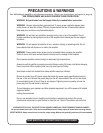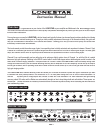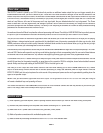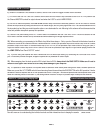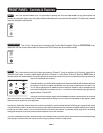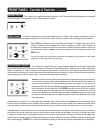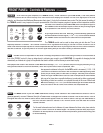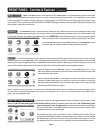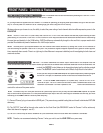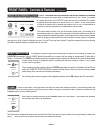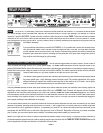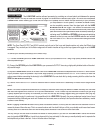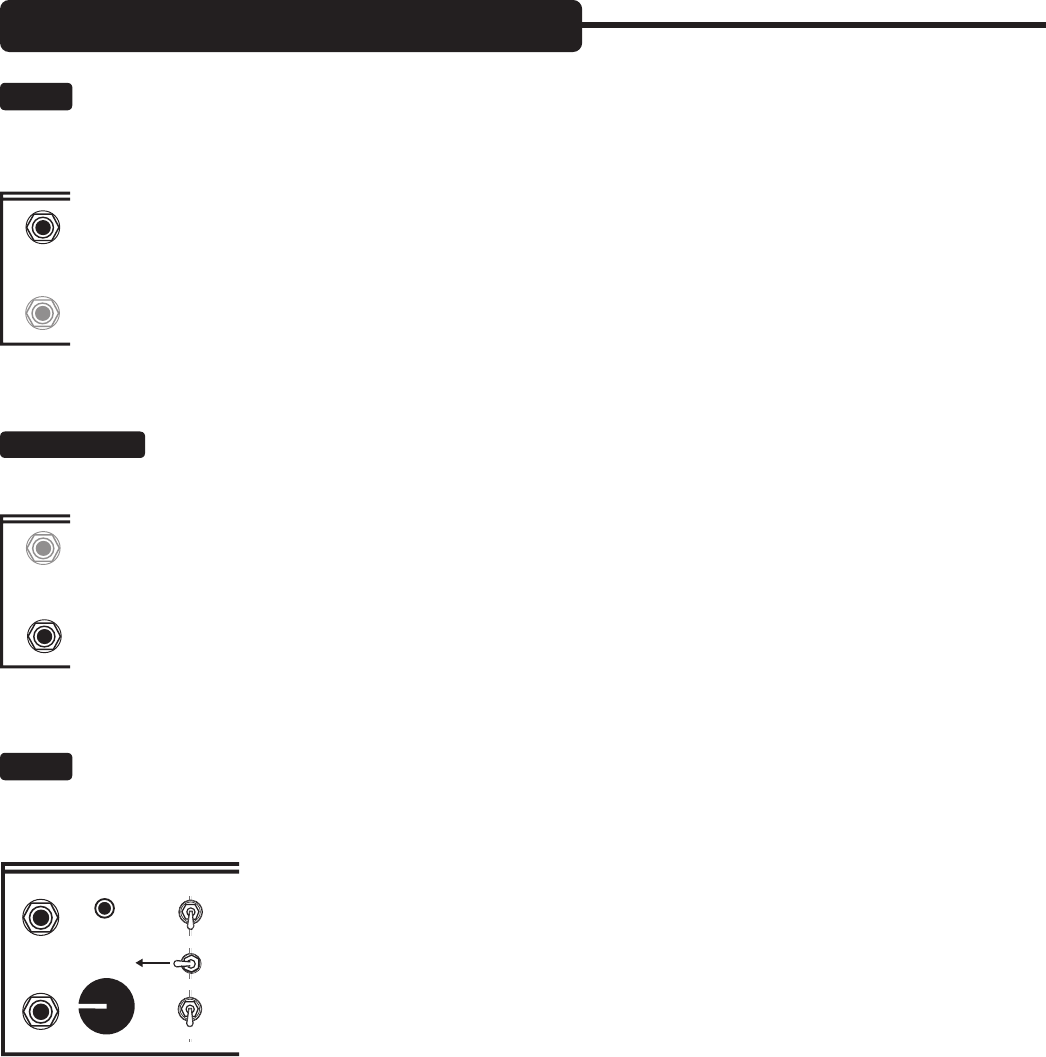
PAGE 4
FRONT PANEL: Controls & Features
INPUT:
This is the instrument
INPUT
jack. This jack feeds the preamp and since the
LONE STAR
is a high gain amplifi er and
therefore very sensitive, always use a high quality shielded cable between the instrument and the amplifi er. This will prevent unwanted
noise and microphonic cable sounds.
FOOTSWITCH:
This 1/4 inch ” stereo jack is for connection of the Channel Select Footswitch. When the
FOOTSWITCH
is con-
nected here with the provided stereo cable, the Channels and SOLO feature may be controlled remotely.
DRIVE:
This is the pre-drive control for the high gain preamp in Channel 2. It may be switched out of the circuit, along with its
associated tube stages, to create a slightly higher gain clone of Channel 1 in (this bottom) Channel 2. When the
DRIVE
control is
activated (switch left, towards
DRIVE
), this control operates in conjunction with the GAIN control to meter the amount of preamp drive
that will be introduced into the circuit.
Generally speaking, you will fi nd better response and dynamics combined with smoother saturation
by setting the GAIN control higher than
DRIVE
. In fact you might try leaving the GAIN set to 2:00
or 3:00 and just playing with the
DRIVE
to learn the regions of saturation. You will probably fi nd the
more blues oriented sounds between 9:00 and 11:00, while the really saturated high gain sounds
appear between 1:00 and 3:00.
Setting the GAIN control slightly higher than the
DRIVE
will produce a warmer quality to the sound
and in most cases this is preferable. By all means experiment with setting the GAIN lower than the
DRIVE
, as the brighter, thinner
character may be desirable for your application.
Learning the relationship between these two controls is probably the most important element to fi nding your signature lead sound.
They are extremely powerful, as they control how your guitar feeds the preamp and also determine the signal strength that is pumped
through the tone control string. This in turn affects how the tone controls will respond. At extremely high settings you will be hearing
mostly gain saturation as the tone controls become recessive due to over-saturation.
This is fi ne if complete saturation is the desired effect, but remember, many of the best sounds are found with more moderate settings
where the gain controls interact with the tone control string to produce a balance of frequencies.
INPUT
FT.SW
INPUT
FT.SW
INPUT
FT.SW
DRIVE
CH 1
FT SW
CH 2
THICK
THICKER
CLEAN
MAL
NOR



